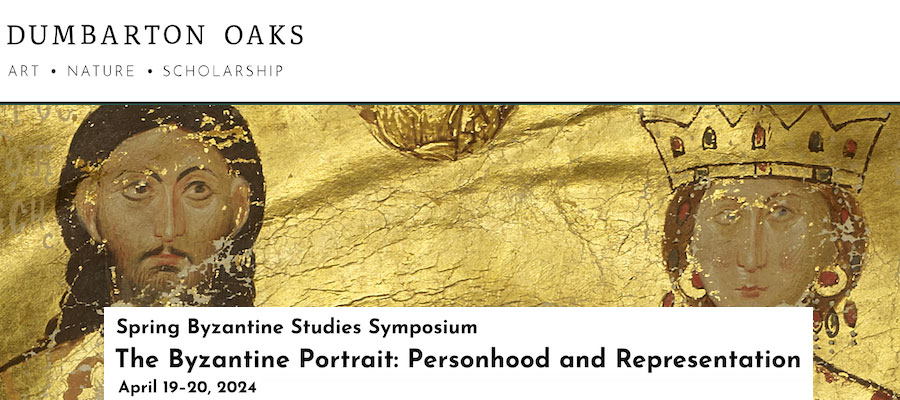The Byzantine Portrait: Personhood and Representation, Spring Byzantine Studies Symposium, Dumbarton Oaks, April 19–20, 2024
In recent years, questions of identity, individuality, and subject formation have been at the forefront of Byzantine studies. Scholarship on autobiographical writings, for instance, has demonstrated that the adoption of exemplary voices and roles can enable self-expression, and therefore that the individual and the normative are not necessarily opposite. Similarly, students of Byzantine theology have drawn attention to the discourse on personhood that developed in the course of the trinitarian and iconoclastic controversies, and allowed Byzantine thinkers to conceive of the human subject both in its autonomy and in its relation to others. The cumulative effect of these studies is to undermine the strict dichotomy between individual and type. Subject formation in Byzantium is no longer negatively defined by the absence of Renaissance individualism. It is understood instead as a process of self-definition through engagement with multiple, sometimes widely varying, models.
These advances urge a reconsideration of the category of portraiture in Byzantine culture. How did individual and type play out in the visual realm? What was the human face ontologically and epistemologically, and how did it disclose identity? How did various conceptual frameworks and contexts of use—theological, legal, or ritual—enable portraits to stand in for, rather than merely represent, their human referents? And how did other media of representation, including inscriptions, monograms, and seals, relate to physiognomic likenesses? In pursuing these questions, we hope to formulate a new model of the Byzantine portrait. Such a model will necessarily be dynamic, changing over time as artistic media and conceptions of the self change. By bringing together art historians and scholars of Byzantine literature and theology, we seek to foster dialogue across disciplinary boundaries. Furthermore, we hope to place Byzantine images and texts in relation to recent historical and theoretical work on portraiture, personhood, and representation in the wider premodern world.
Symposiarchs
Benjamin Anderson (Cornell University)
Ivan Drpić (University of Pennsylvania)
Advance registration required.
